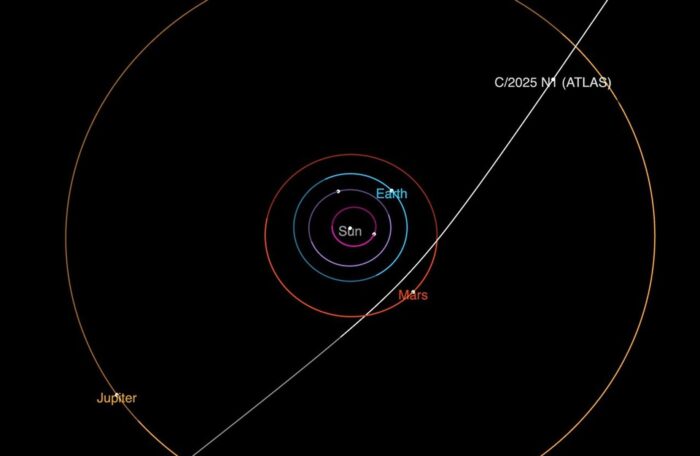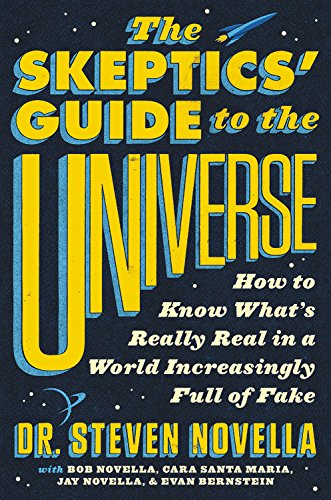Jul 22 2025
Avi Loeb and the Alien Technology Hypothesis
 Avi Loeb is at it again. He is the Harvard astrophysicist who first gained notoriety when he hypothesized that Oumuamua, the first detected interstellar object, might be an alien artifact. His arguments were pretty thin, not taken very seriously by the scientific community, and mostly did not pan out. However, Oumuamua has left the solar system and so any unanswered questions will remain forever unanswered. But Loeb has been riding his fame and his alien artifact narrative ever since, founding the Galileo Project dedicated to looking for alien technological artifacts. Recently, NASA discovered the third every interstellar object, and the first interstellar comet, 3I/ATLAS. (“3I” is simply the nomenclature for the third interstellar object, and “ATLAS” for the Asteroid Terrestrial-impact Last Alert System that made the discovery.) Loeb recently published a paper and is blogging that this too shows “anomalies” deserving of exploring the ET technology hypothesis. And again – I am not impressed.
Avi Loeb is at it again. He is the Harvard astrophysicist who first gained notoriety when he hypothesized that Oumuamua, the first detected interstellar object, might be an alien artifact. His arguments were pretty thin, not taken very seriously by the scientific community, and mostly did not pan out. However, Oumuamua has left the solar system and so any unanswered questions will remain forever unanswered. But Loeb has been riding his fame and his alien artifact narrative ever since, founding the Galileo Project dedicated to looking for alien technological artifacts. Recently, NASA discovered the third every interstellar object, and the first interstellar comet, 3I/ATLAS. (“3I” is simply the nomenclature for the third interstellar object, and “ATLAS” for the Asteroid Terrestrial-impact Last Alert System that made the discovery.) Loeb recently published a paper and is blogging that this too shows “anomalies” deserving of exploring the ET technology hypothesis. And again – I am not impressed.
Let me jump ahead a bit and say up front – I am not against exploring the alien hypothesis, pretty much in any context. Even though the probability may be low, the payoff would be huge, and it’s worth a consideration. I am not against looking for alien technological signatures. This may, in fact, be the best method for detecting an alien technological civilization. I also think that serious academics and scientists should be taking such efforts seriously and there should be no academic shame in engaging in them. So I am with Loeb to that extent.
What bothers me about Loeb is that his arguments are so terrible. He is just another classic example of an academic and scientist who has no apparent experience with scientific skepticism and therefore is falling for common pitfalls. He also appears to not have learned anything in the last seven years, which is greatly disappointing. In fact, I would argue that he is hurting his stated greater cause (with which I largely agree), to make searching for alien technology academically respectable. Loeb is essentially engaging in anomaly hunting, and shows no signs of understanding what that means. Let’s take a look at his latest list of apparent “anomalies” to see what I mean.
For background, looking for real anomalies is a legitimate and very fruitful scientific endeavor. Scientists love anomalies (the exact opposite of the popular conspiracy narrative that they only want to validate current dogma), because they point in the direction of new science. Anomalies are ready made experiments begging to be conducted. The grants almost write themselves (not really, but you get what I mean). Good scientists know a genuine and fruitful anomaly when they see one. Pseudoscientists see dubious anomalies everywhere, and are likely to see them precisely where they want them to be (another method of starting with a conclusion and working backward to the evidence). Loeb is somewhere on that spectrum, toward the bad end.
In his blog post he summarizes eight anomalies he thinks make 3I/ALTAS deserving of the alien hypothesis. None of them are compelling, in my opinion, but let me hit some of them to show you what I mean. He writes:
“The retrograde orbital plane (defined by the orbital angular momentum vector) of 3I/ATLAS around the Sun lies within 5 degrees of that of Earth — the so-called ecliptic plane. The likelihood for that coincidence out of all random orientations is 0.2%.”
This is classic anomaly hunting – looking for features that, in isolation, might have a low probability, but failing to consider the number of features there are in which to search for such apparent anomalies. I also disagree with the figure – the chance of being within 5 degrees of the ecliptic is 2.7% (10 degree range out of 360), but he also includes the fact that the path of 3I/ATLAS is retrograde. Why – because that would make it harder for Earth to intercept it with chemical rockets. So he is assuming that the aliens are trying to make it difficult for Earth to send a probe to their probe. Is this something he decided prior to noticing that 3I/ATLAS was close to the ecliptic, or a retrodiction he made to “explain” the apparent anomaly? If the comet had a different trajectory, could he have invented a reason why that was desirable by the alleged aliens? Is this a known feature of alien probes? Someone familiar with the arguments of astrologers would recognize such retrofitting when they see.
Similarly, he writes:
“For its orbital parameters, 3I/ATLAS is synchronized to approach unusually close to Venus (0.65au where 1au is the Earth-Sun separation), Mars (0.19au) and Jupiter (0.36au), with a cumulative probability of 0.005% relative to orbits with the same orbital parameters but a random arrival time.”
But what if the aliens wanted to take a look at Mercury, Earth, and Saturn? Why Jupiter, Mars and Venus? This is a kind of lottery fallacy – he is calculating the odds of this specific outcome, rather than any outcome that allows for close approaches to any combination of planets. What is the probability that the path would not allow for a good angle of view of any planet.
He also points out that:
“3I/ATLAS achieves perihelion on the opposite side of the Sun relative to Earth. This could be intentional to avoid detailed observations from Earth-based telescopes when the object is brightest or when gadgets are sent to Earth from that hidden vantage point.”
He argues to “probe” might burn its engines when hidden from Earth on the far side of the sun, in order to stay in our solar system and even rendezvous with Earth. But wait – if the ultimate goal is to reveal itself by changing its trajectory and even meeting up with Earth, then why hide itself and its maneuvers? Loeb acknowledges that 3I/ATLAS entered our solar system 8,000 years ago – so the aliens would have had to calculate the orbit that far in advance for multiple parameters, including a good view of some neighboring planets while hiding from the Earth, but then meeting up with Earth anyway.
Regarding that 8,000 years, Loeb tried to turn that into a positive as well, saying: “This was roughly when human-made technologies became advanced enough to start documenting history on Earth.” So what? And was it really? There is nothing special about 8,000 years ago that would have caught an alien civilization’s attention. But also (something Loeb does not mention) – if this is an 8,000 year old probe, the aliens would have had essentially no idea where human technology would be when the probe arrived. They apparently made all sorts of accommodations to avoid interception by chemical rockets, but how could they have known we would be at this stage of space travel now? They couldn’t. Where will our technology be in 1-200 years (where it could have been now if our advancement had been only a little faster)? We are on the cusp of fission, and possibly even fusion, rockets. And if our development had been just a tiny itsy bit slower, we would have not rockets at all.
Keep in mind – we could have fission rockets right now if we had simply pursued that technology. The window of chemical rockets only could have been mere decades or even years – or even nothing at all. We had mastered fission by about the time we developed a rocket powerful enough to get into orbit, and we could have had fission rockets this whole time. The point is – it seems like an awful lot of trouble to go through simply to temporarily frustrate our attempts at interacting with their probe, but only for a tiny sliver of our likely technological development.
Loeb does acknowledge the alien hypothesis of 3I/ATLAS is unlikely, writing:
“Our paper is largely a pedagogical exercise, with interesting realizations worthy of a record in the scientific literature. By far, the most likely outcome will be that 3I/ATLAS is a completely natural interstellar object, probably a comet, and we await the astronomical data to support this likely origin.
Nevertheless, when viewed from an open-minded and unprejudiced perspective, our paper includes many compelling insights that could be applied to tens of interstellar objects that are expected to be detected over the next decade by the Vera C. Rubin observatory.”
It sounds, however, like he is desperately trying to salvage his academic reputation, pushing back against his critics. In a way he is resorting to a “just asking questions” position. But like many who JAQ off, he misses the point of the criticism – this is not about being open minded. This is about using valid logic and sound scientific reasoning. Loeb is falling into a very familiar pattern, well, familiar to skeptics. His arguments are bad, and they do a disservice to legitimate efforts to detect alien life.






